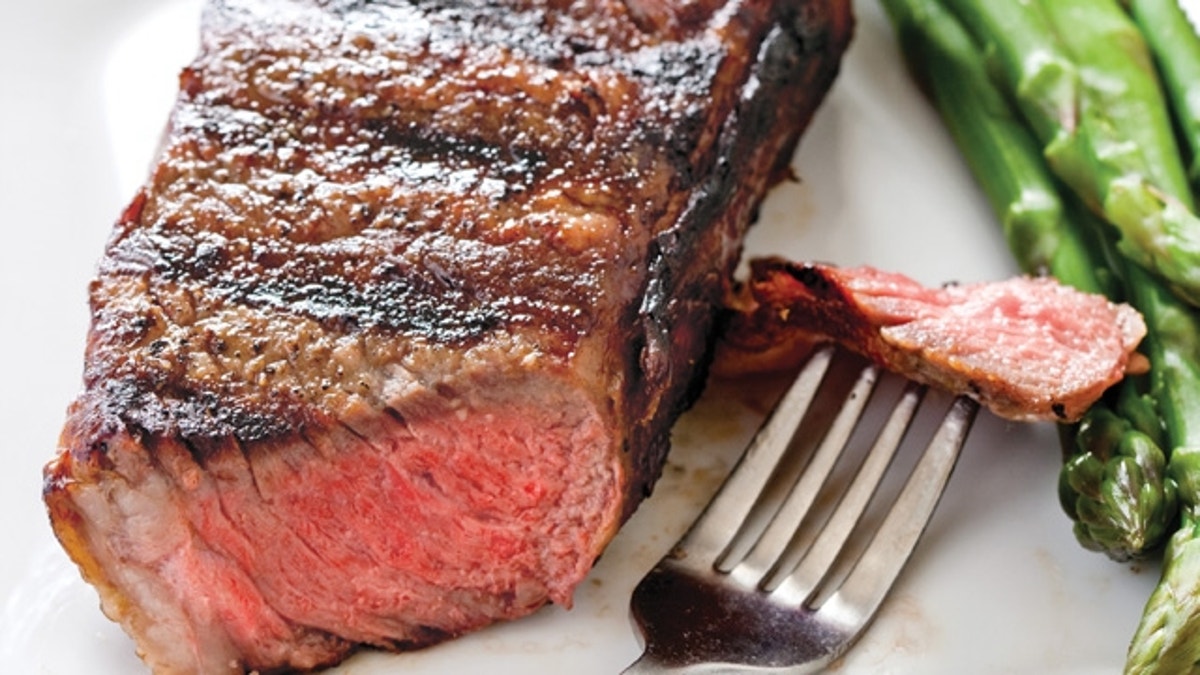
The best steaks are salty, sizzling, and almost singed on the outside and juicy, red, and almost buttery within. It’s the contrast that makes for perfect steak.
Steakhouses achieve formidable crust with industrial-strength grills and broilers (some push temperatures into quadruple digits!) that instantly evaporate surface moisture on the meat, leaving a dry surface upon which to build a substantial caramelized crust. Home rigs can’t get that hot (500 degrees is all you can ask for), so you can kiss good crust goodbye.
I wanted to use any old backyard grill to get that same delicious charred crust on our favorite tender (and expensive) cuts: strip, filet mignon, and rib eye. Most of us buy prepackaged supermarket steaks, which sit in a pool of juices on a Styrofoam tray. The obvious first step was to dry them. I blotted them with paper towels, heated the grill, seasoned the steaks with salt and pepper, and cooked them to medium-rare over a hot fire. They were pretty good eating, but the exteriors stayed pale and moist.
Many steakhouses dry-age beef for weeks to tenderize the meat (enzymes in the meat slowly break down) and concentrate flavor (through dehydration). I wondered if a byproduct of that dehydration—less moisture to be exuded during cooking, thus a drier surface—could help me develop a steakhouse-worthy crust. So I tried quickly “aging” my steak overnight in the refrigerator (uncovered on a wire rack).
It worked, but was too much advance work for a simple grilled steak. Aware that salt draws moisture out of foods, I salted the steaks and let them sit on paper towels for an hour before cooking. The paper towels became soggy, but the grilled steaks still failed to form a respectable crust.
Moving on, I sprinkled the steaks with sugar with the idea it might caramelize into a crusty coating. The sugar burnt, the steaks tasted sweet—a complete nonstarter. In the test kitchen, we often talk about how the freezer robs food of moisture.
The freezer’s intensely dry environment causes rapid evaporation. Nine times out of 10, it’s an effect we’re trying to counteract, but could it work in my favor here?
I froze unwrapped steaks for an hour and placed them on a hot grill. It did the trick! Since the steaks had been frozen for just an hour, the interiors remained tender and juicy, but the exteriors were sufficiently dehydrated to develop a first-class crust. (Starting out with cold meat also bought me almost a minute of extra grill time to develop char.)
Next, I tried salting the steaks before partially freezing them, which not only assured a well-seasoned steak but also drew moisture to the surface, where it evaporated. For one final test, I mixed the salt with a teaspoon of cornstarch—a champ at absorbing moisture. That allowed me to cut the freezing time in half—to just 30 minutes—and still achieve a bone-dry exterior.
My own house might not have the swagger and mahogany of a steakhouse, but I had what I wanted most: a perfect grilled steak.
Click here for the recipe for Super-Crusty Grilled Steaks.
Click here for the recipe for Fluffy Mashed Potatoes.
Lynn Clark is one of the 42 test cooks, editors, food scientists, tasters, and cookware specialists who run the Boston-based America’s Test Kitchen (ATK) test kitchen.
